Barry had made an offhand comment in early 2006 that he'd love to visit Trinity Site, the location of the first atomic bomb detonation. We did some research and found out that it is open 1 day a year for visitors - the first Saturday in April. So we planned a trip to New Mexico to take advantage of this window. We also wanted to see the Very Large Array in Socorro and White Sands National Monument. It would be a long-weekend trip because Kevin would be missing school.
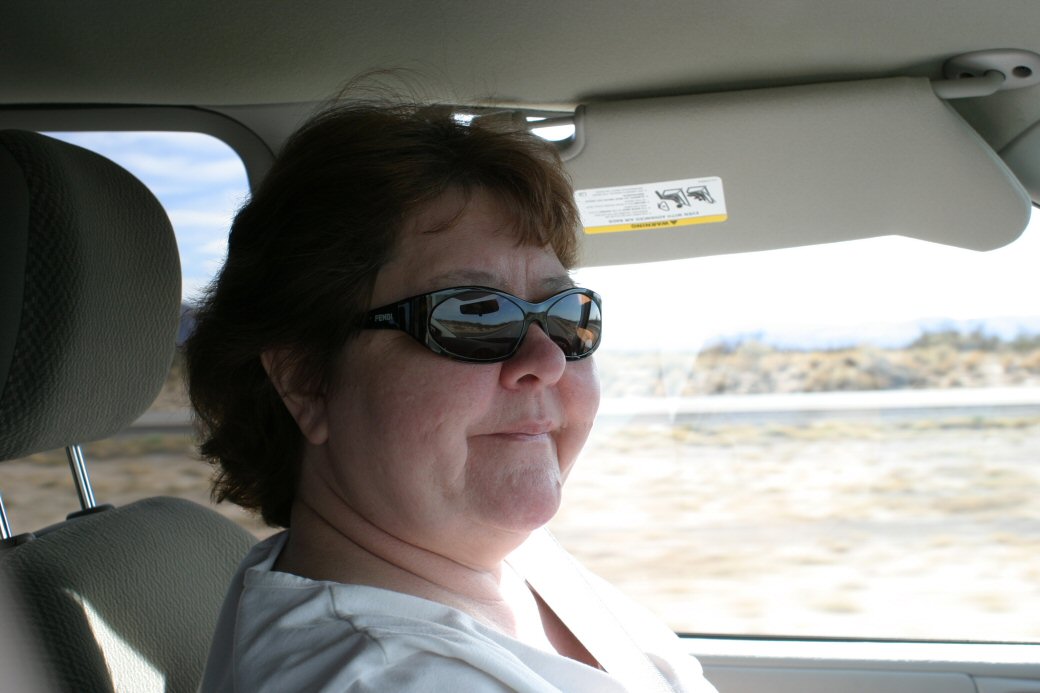
|
We flew into El Paso, TX and drove a few hours up to Truth or Consequences, NM to spend the night. We chose to stay there because the access to Trinity Site is on the north end of White Sands Missile Range and that is the closest large town. We wanted to be at the entrance bright and early on Saturday April 1 to get in.
*-*-*
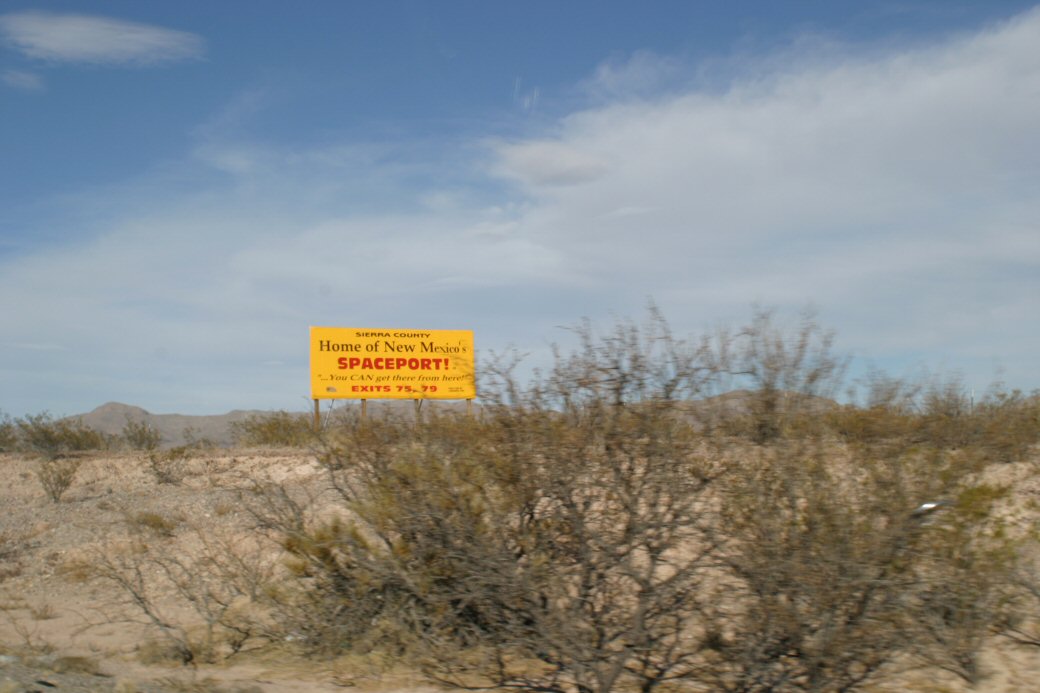
|
Near Truth or Consequences we passed by Spaceport, USA.
*-*-*
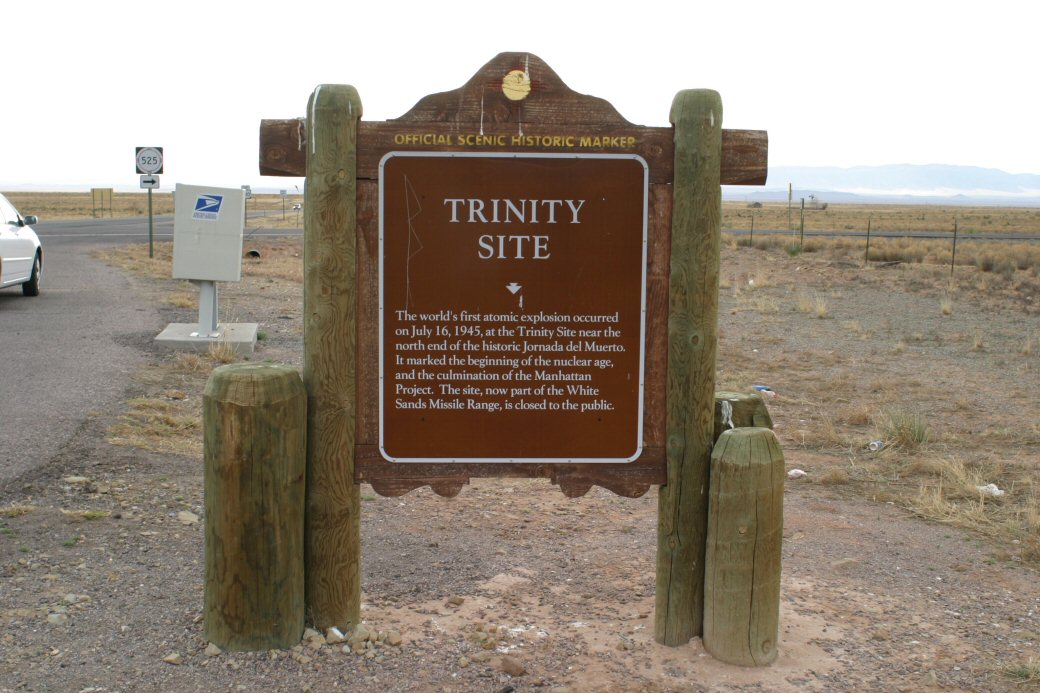
|
Saturday April 1st after breakfast we drove to Trinity Site. Access is off U.S. Highway 380.
From the Trinity Site webpage: "For the Project Trinity test, the bomb was placed atop a 100-foot steel tower that was designated Zero. Ground Zero was at the foot of the tower. Equipment, instruments, and observation points were established at varying distances from Ground Zero. The wooden observation shelters were protected by concrete and earthen barricades, and the nearest observation point was 5.7 miles from Ground Zero.
At 5:30 A.M. on July 16, the nuclear device, known as “Gadget,” was successfully detonated. To most observers—watching through dark glasses—the brilliance of the light from the explosion overshadowed the shock wave and sound that arrived some seconds later. A multi-colored cloud surged 38,000 feet into the air within seven minutes. Where the tower had been was a crater one-half mile across and eight feet deep. Sand in the crater was fused by the intense heat into a glass-like solid, the color of green jade. This material was given the name trinitite. The explosion point was named Trinity Site."
*-*-*
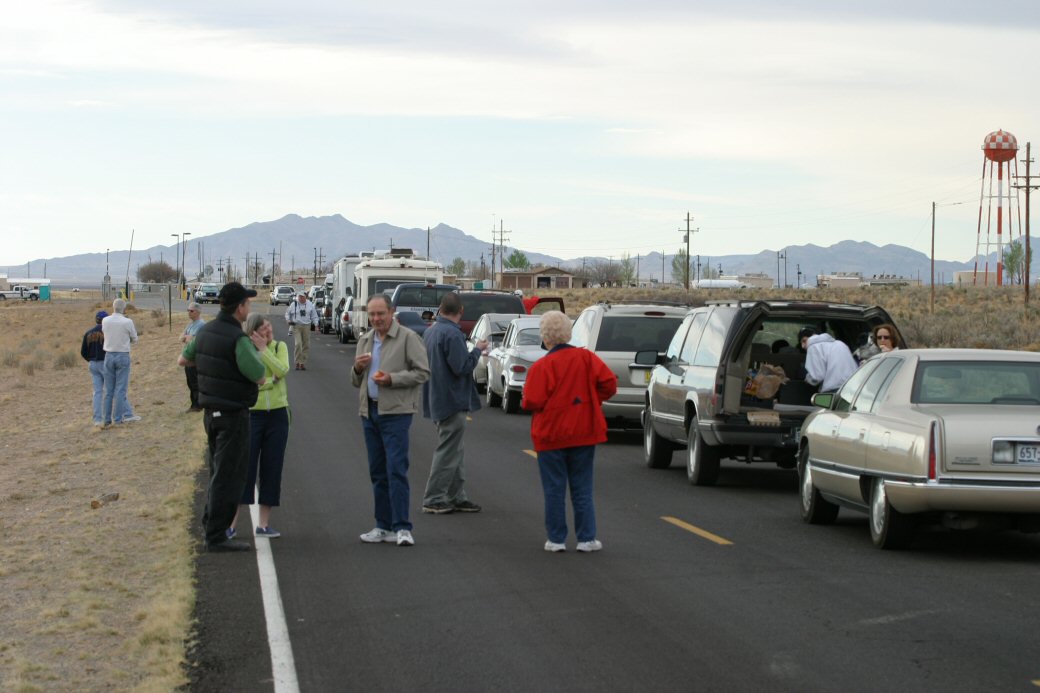
|
We weren't sure what to expect, but when we arrived about 30 minutes before the gates opened, there was already a long line of cars.
*-*-*
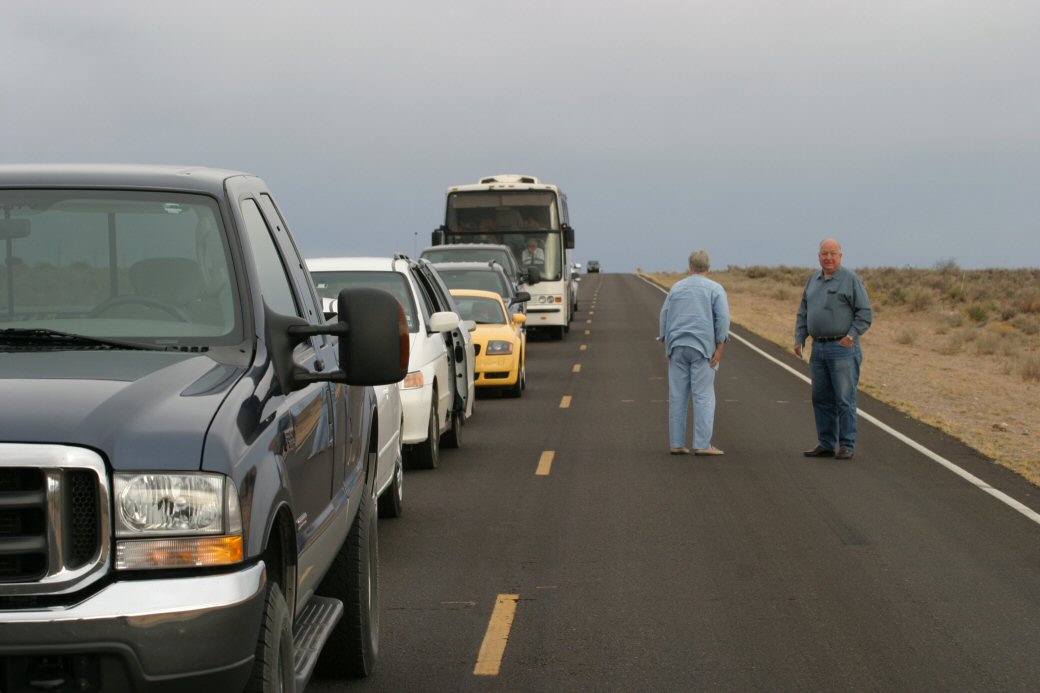
|
And before the gates opened, there were many more cars and buses that arrived.
*-*-*
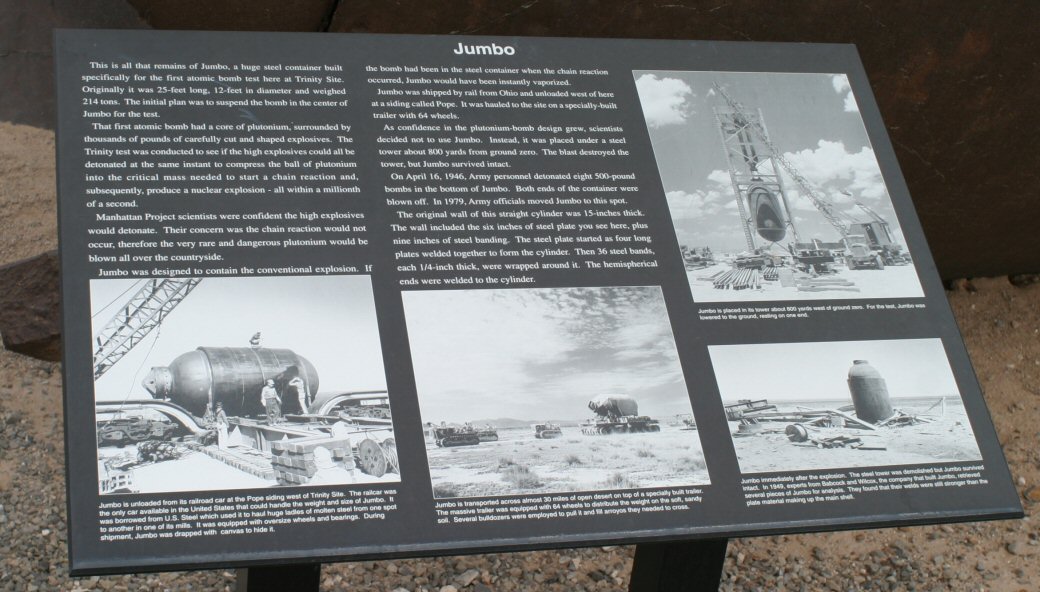
|
A sign for Jumbo - a failsafe device for the trinity test explosion to contain the plutonium in the case of a fizzle or malfunction of the detonation.
*-*-*
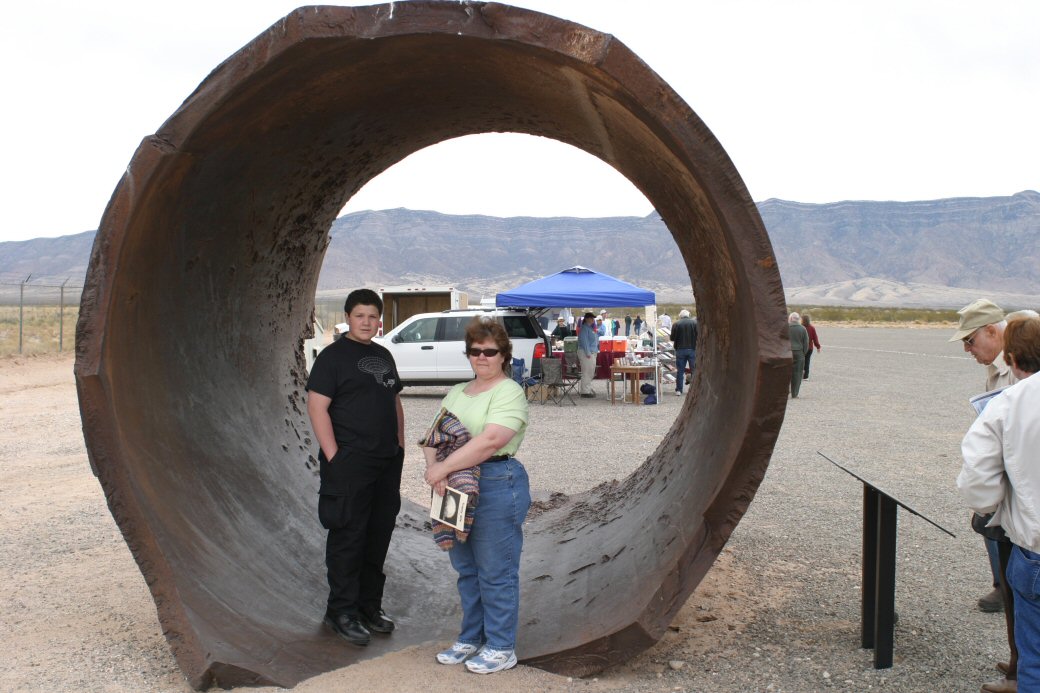
|
General Groves spent $12 million on Jumbo, a steel cylinder 10 feet in diameter and 25 feet long. Its walls were 14 inches thick and the entire device weighed 200 tons. It was not used after confidence in the device grew. Instead it was suspended in a steel tower 800 yards from the explosion. The tower collapsed but Jumbo survived. Lori and Kevin stand inside what remains of Jumbo today.
*-*-*
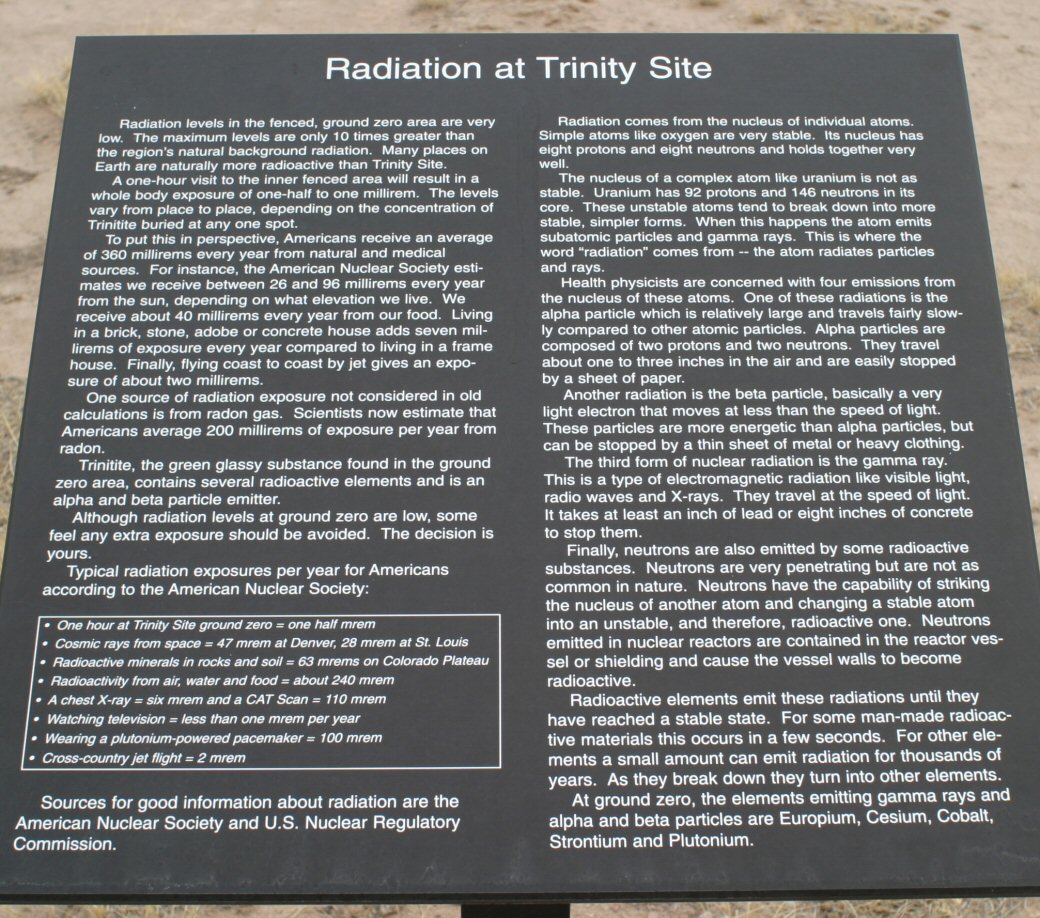
|
A sign discussing radiation levels, what they mean and what remains at Trinity site.
*-*-*
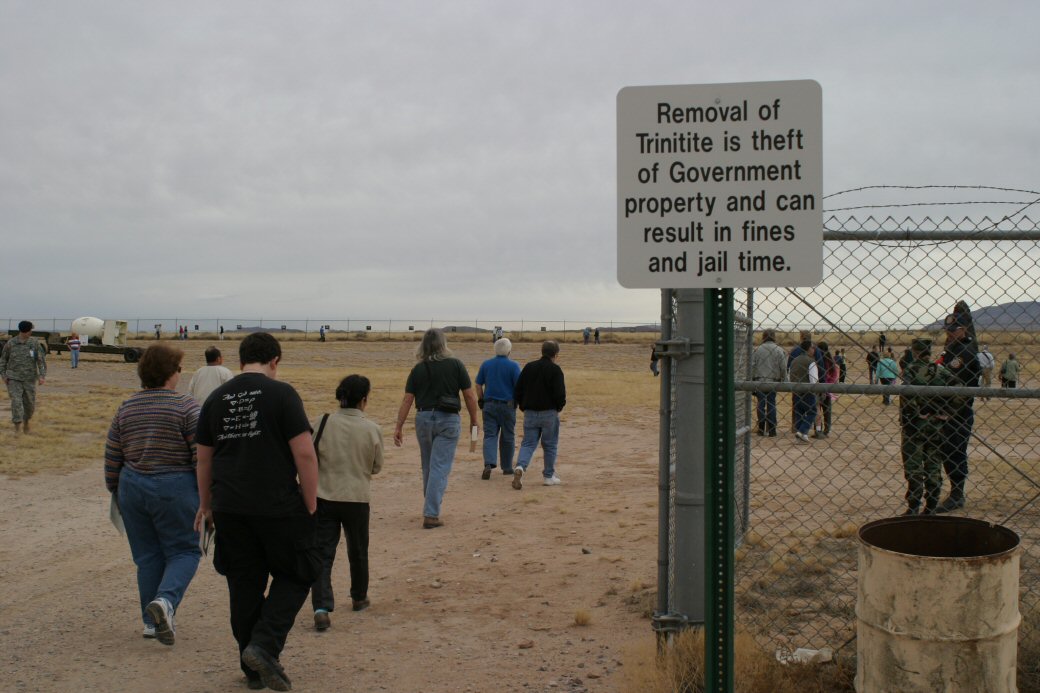
|
Walking into the fenced area around ground zero. Trinitite is a glassy man-made mineral resulting from the first atomic weapon explosion. It is a greenish colored "rock" which is found in the area around Trinity site. There is not much left so they no longer allow visitors to take samples.
*-*-*
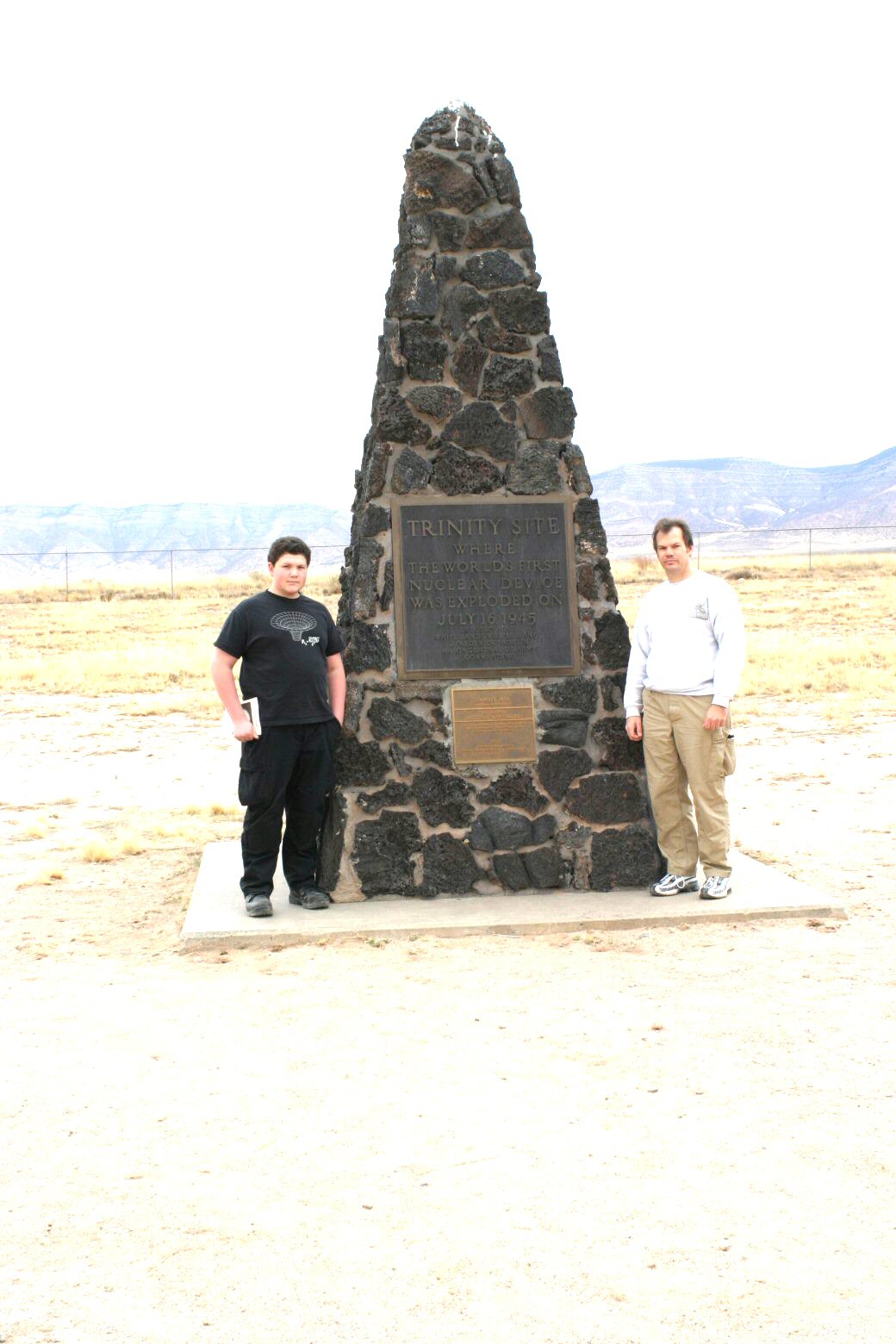
|
Barry and Kevin standing at the monument marking the location of the steel tower where the first atomic weapon was detonated July 16, 1945.
*-*-*
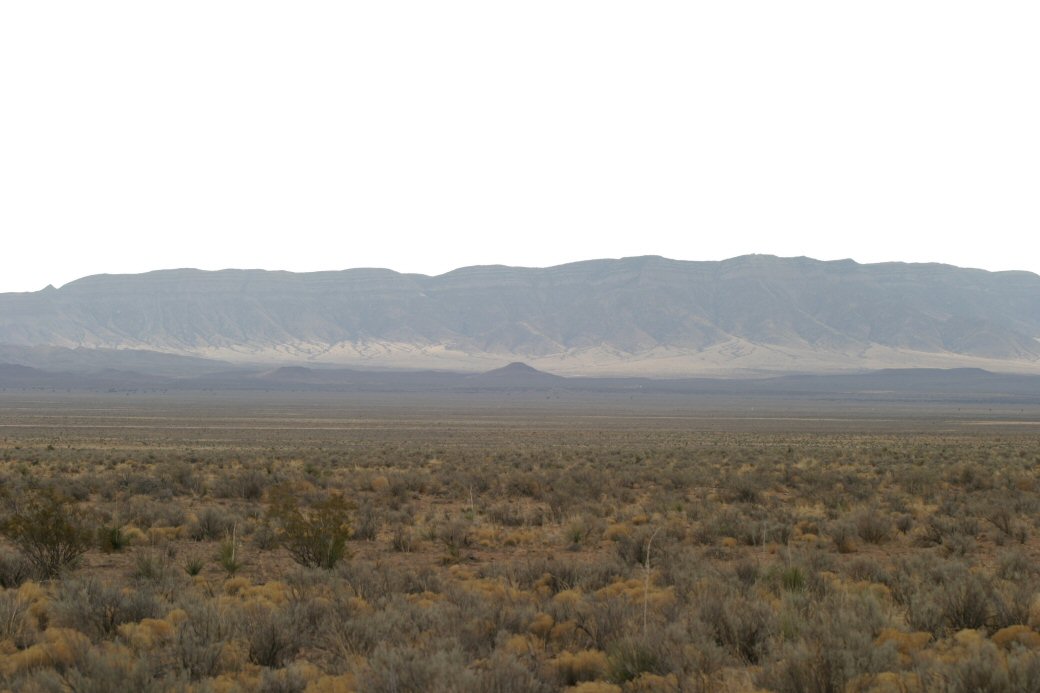
|
The terrain around Trinity Site
*-*-*
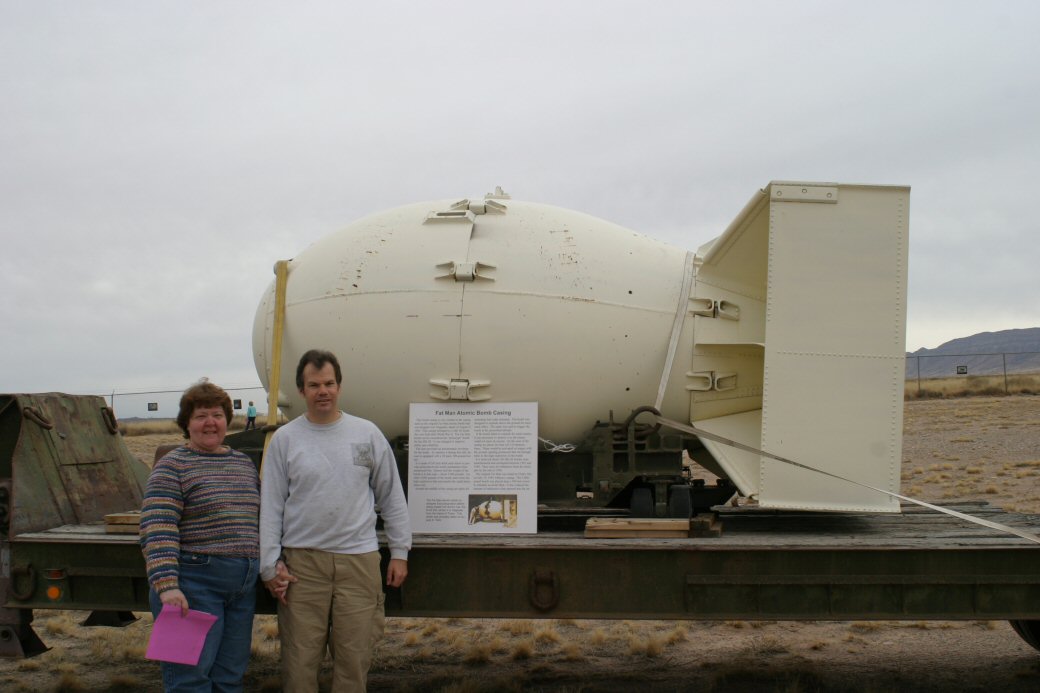
|
Barry and Lori stand in front of a Fat Man metal casing on display.
*-*-*

|
Some small shards of Trinitite.
*-*-*
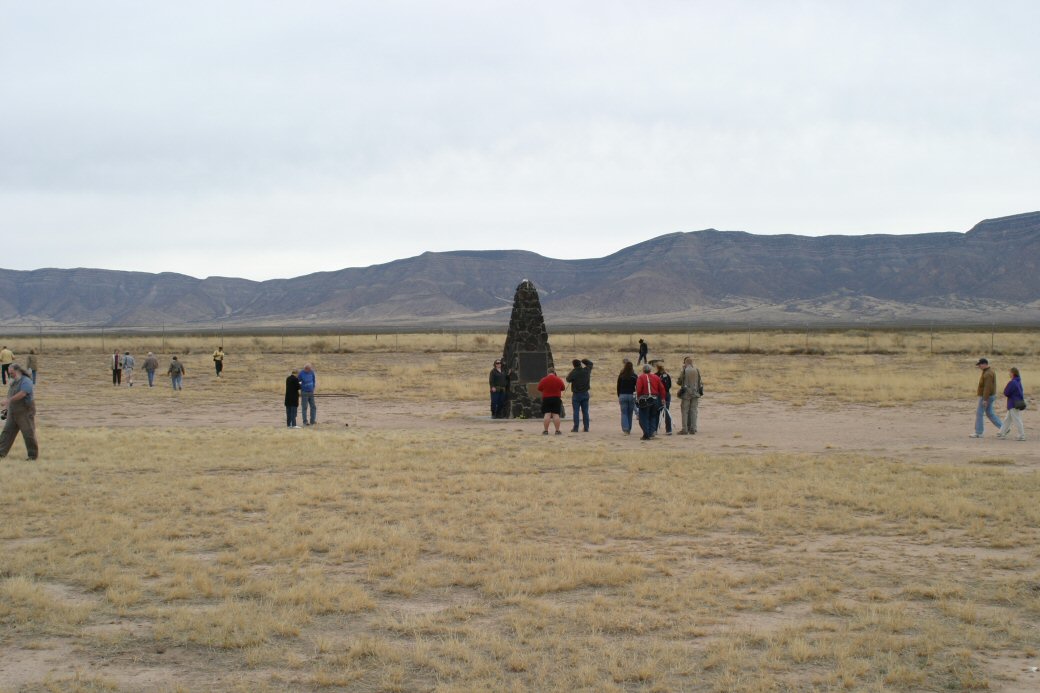
|
Visitors wandering around Trinity Site.
*-*-*
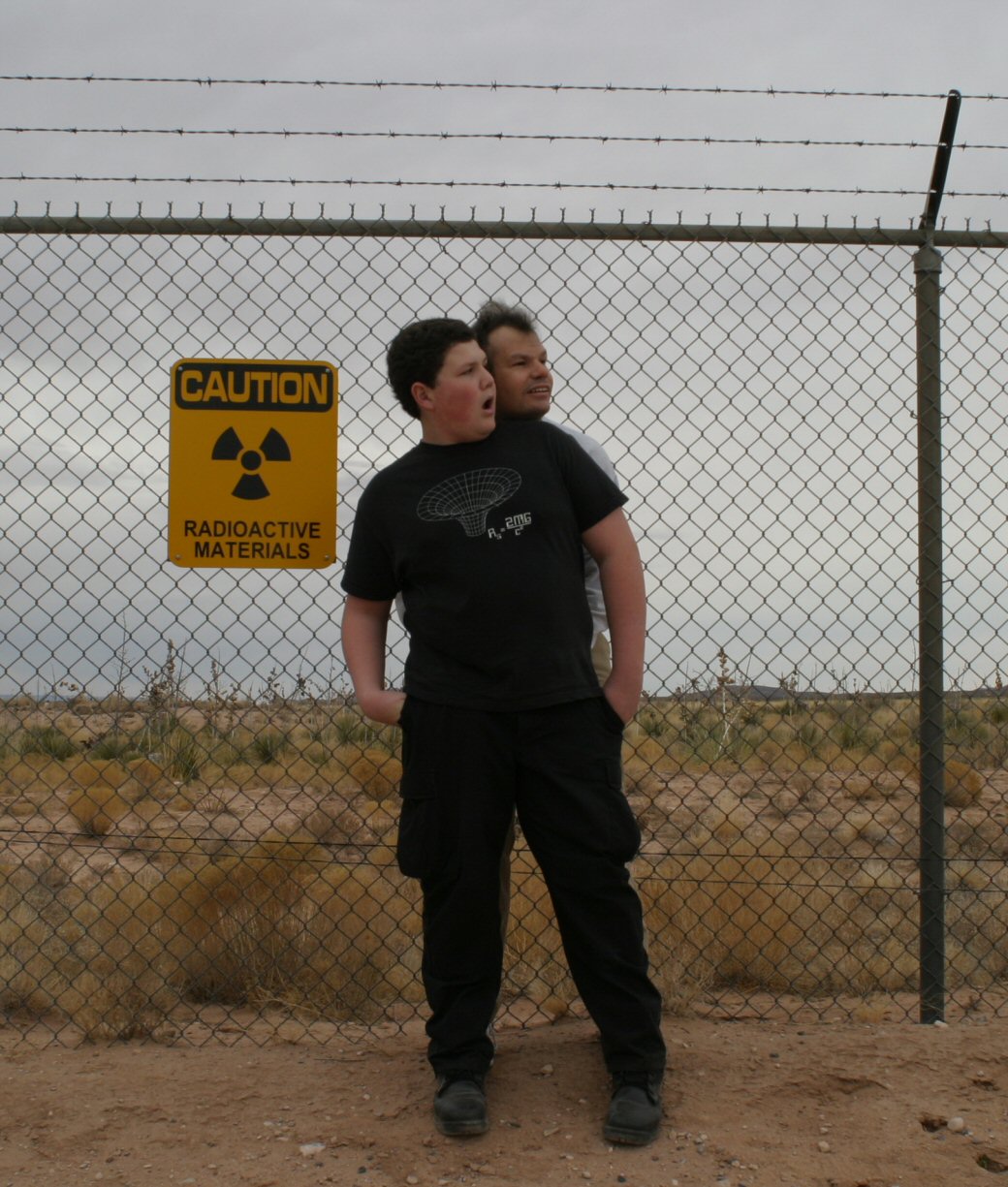
|
We saw this two-headed creature near the fence at Trinity Site.
*-*-*
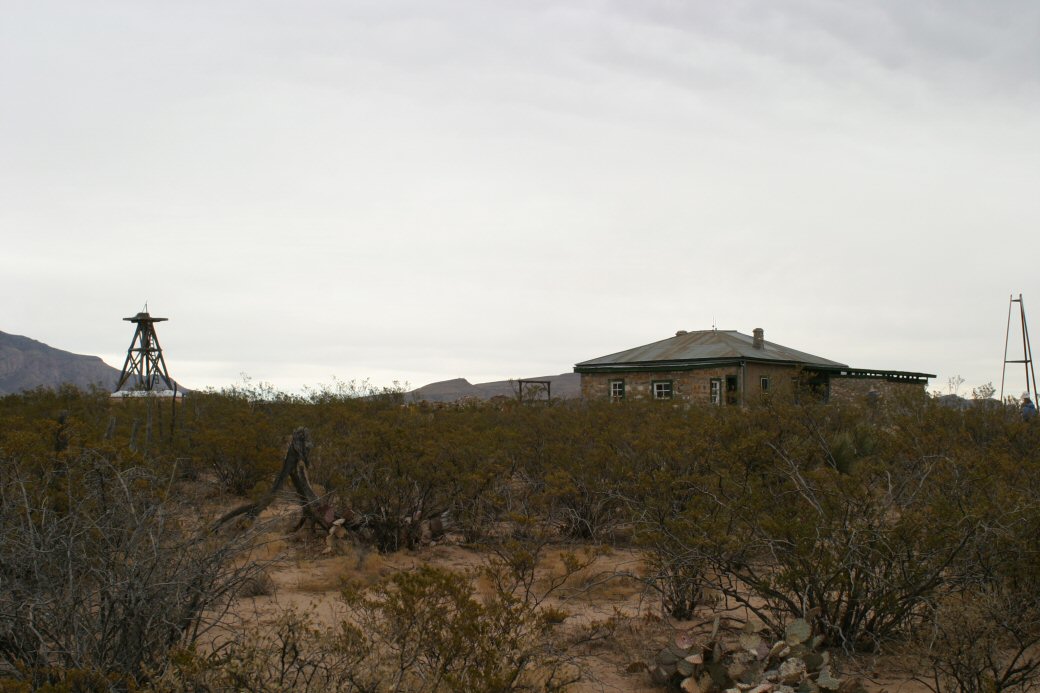
|
The McDonald Ranch house was used for the final assembly of the first nuclear weapon detonated at Trinity Site. The house was privately built in 1913 and acquired by the McDonald family in the 1930's. They gave it up and vacated, under protest, in 1942 when the land became a part of Alamagordo Bombing and Gunnery Range. The McDonald family hoped it would be returned after the war, but in 1970 the army announced it would be keeping it permanently. The house was restored in 1984 by the National Park service to appear as it was in 1945.
It is located about two miles from ground zero and the explosion blew most of the windows out but did not significantly damage the structure. They don't build them like they used to!
*-*-*
We wrapped up at Trinity site after lunch and got on the road to return to Truth or Consequences and our hotel for dinner and to spend the night. Tomorrow we would check out and go to the Very Large Array before heading south to Alamagordo.
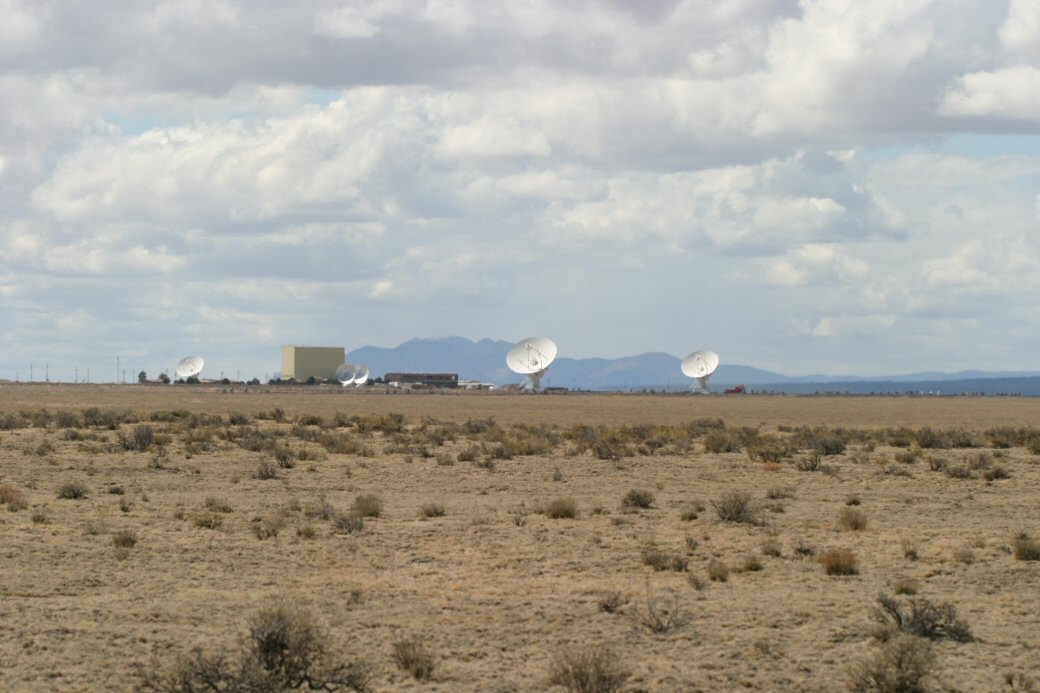
|
The approach to the Very Large Array (VLA) on the plains of New Mexico near Socorro. This is also known as the National Radio Astronomy Observatory. From their webpage: "The Very Large Array, one of the world's premier astronomical radio observatories, consists of 27 radio antennas in a Y-shaped configuration on the Plains of San Agustin fifty miles west of Socorro, New Mexico. Each antenna is 25 meters (82 feet) in diameter. The data from the antennas is combined electronically to give the resolution of an antenna 36 km (22 miles) across, with the equivalent sensitivity of a dish 130 meters (422 feet) in diameter."
*-*-*
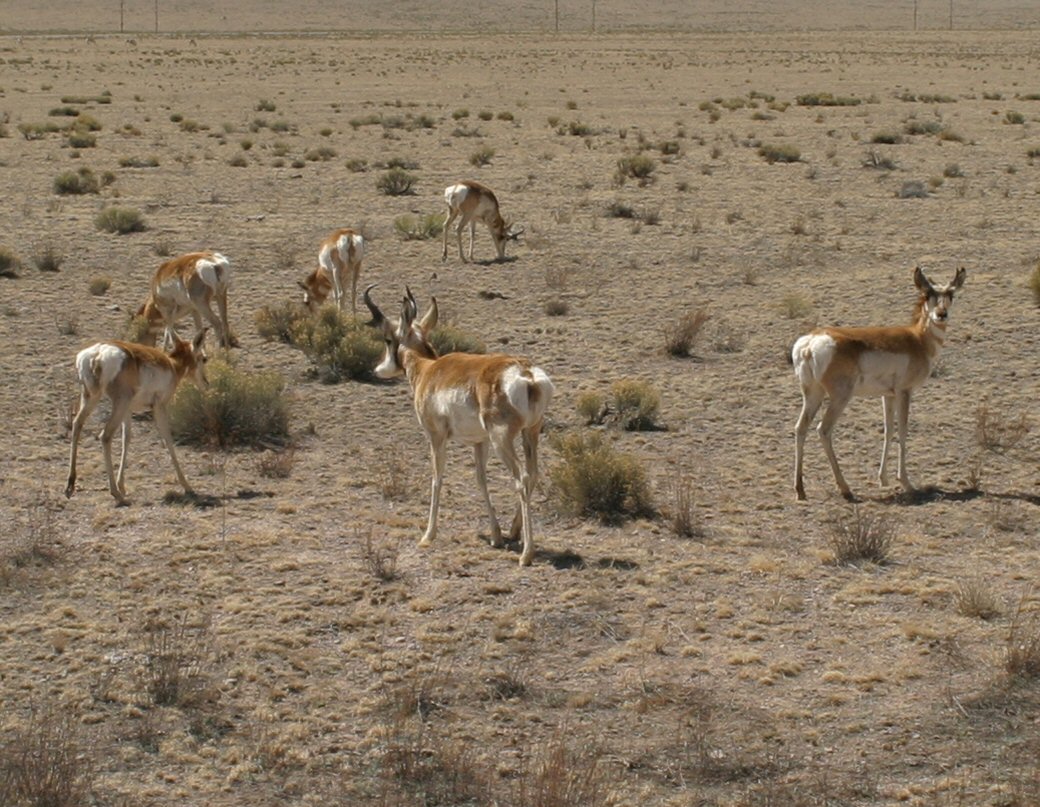
|
Wildlife grazing on the grounds of the VLA.
*-*-*
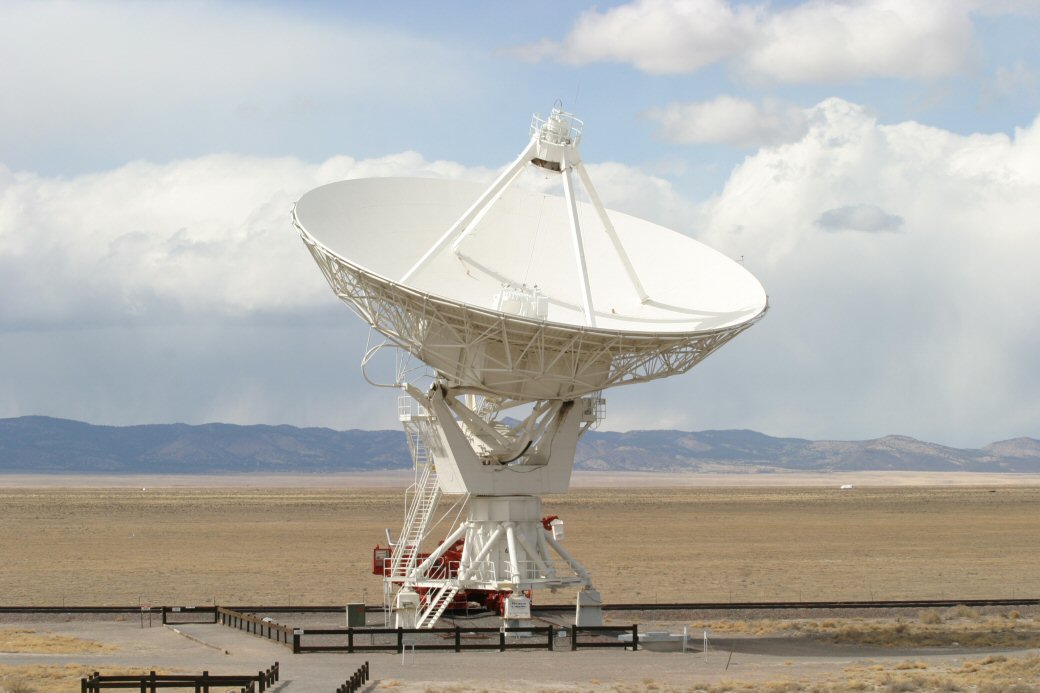
|
An individual antenna. While it may not look huge in this photo, the dish is 82 feet in diameter. This was a very large structure when you were standing next to it!
*-*-*
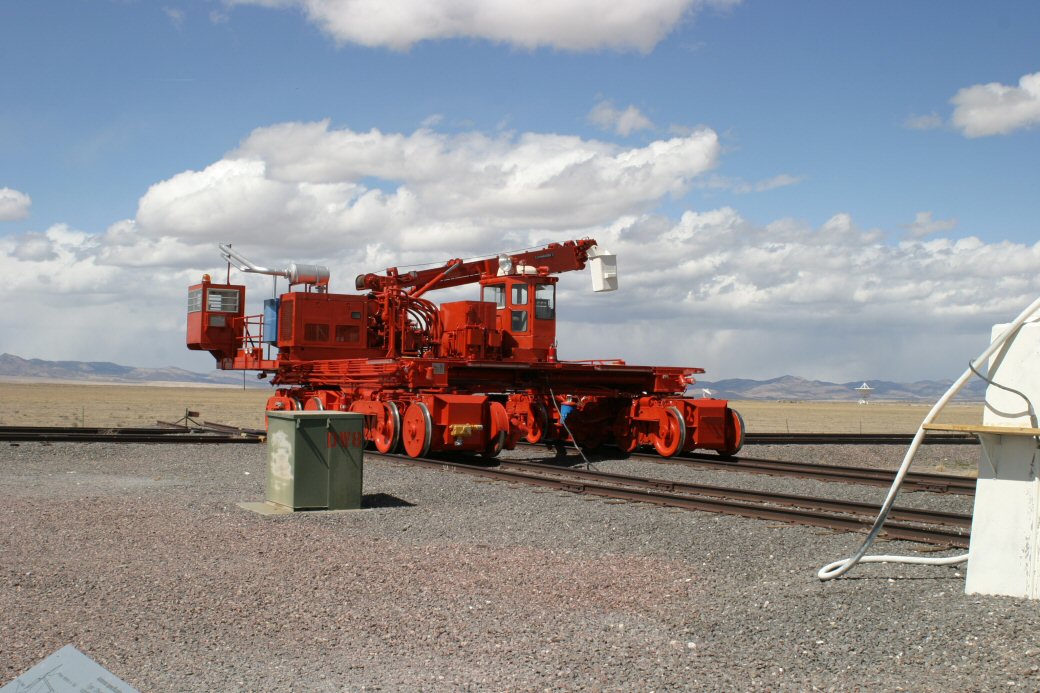
|
This tractor is used to move the individual antennas to new positions.
*-*-*
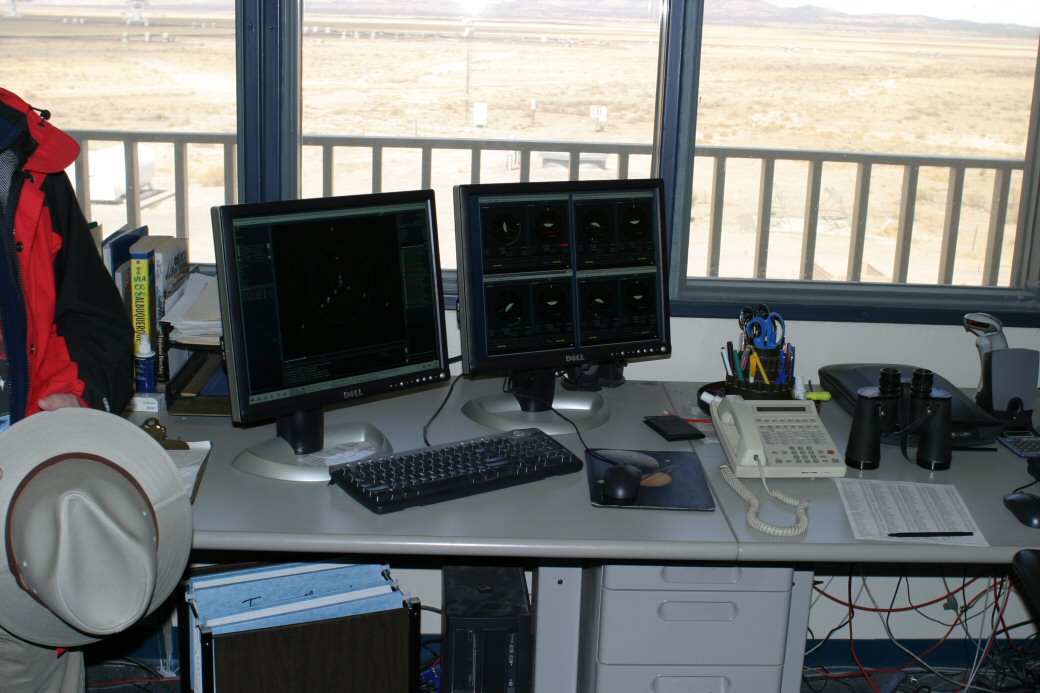
|
We took a tour of the facility and got to see some of their research and the control rooms. Here is one of the control rooms that looks out at the antennas.
*-*-*
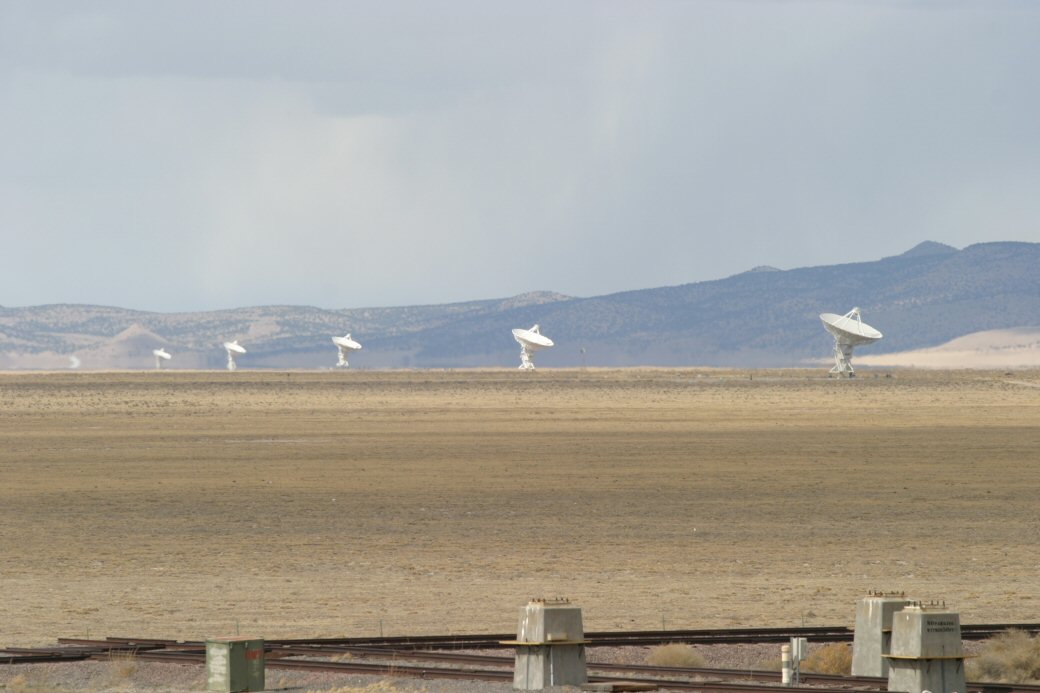
|
Looking at a row of the VLA antennas.
*-*-*
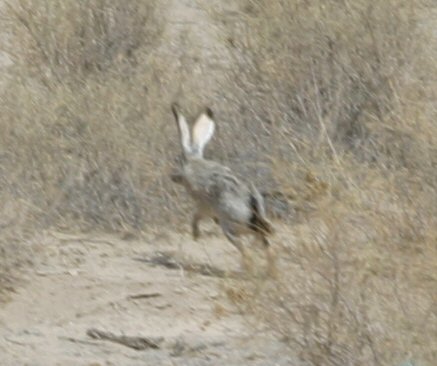
|
Barry caught this jack rabbit in mid-jump.
*-*-*
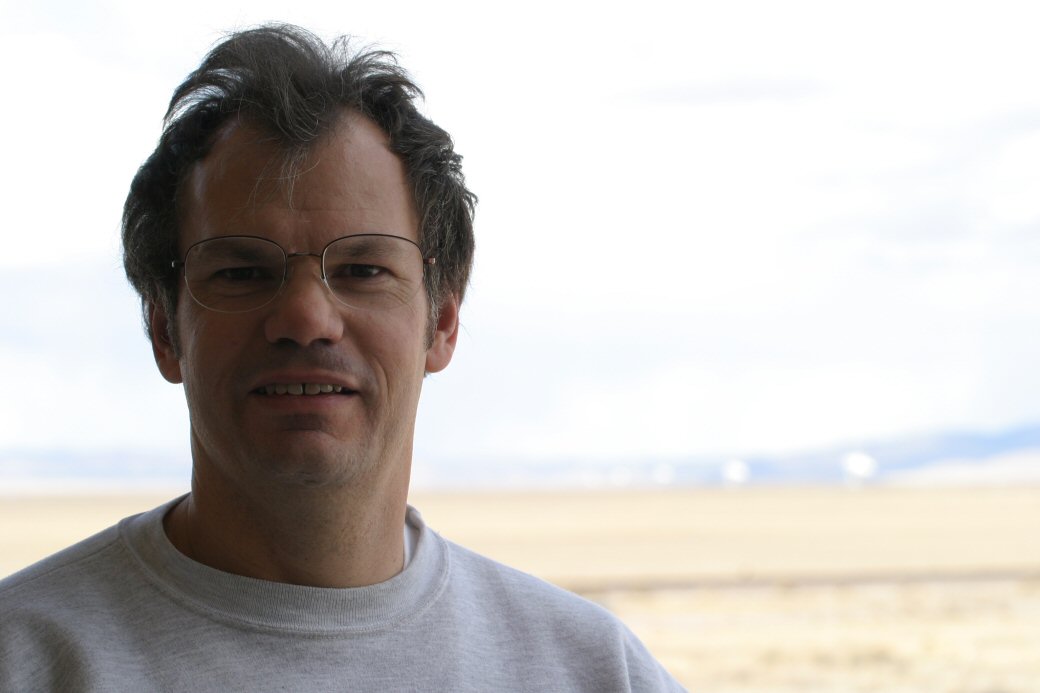
|
Barry
*-*-*
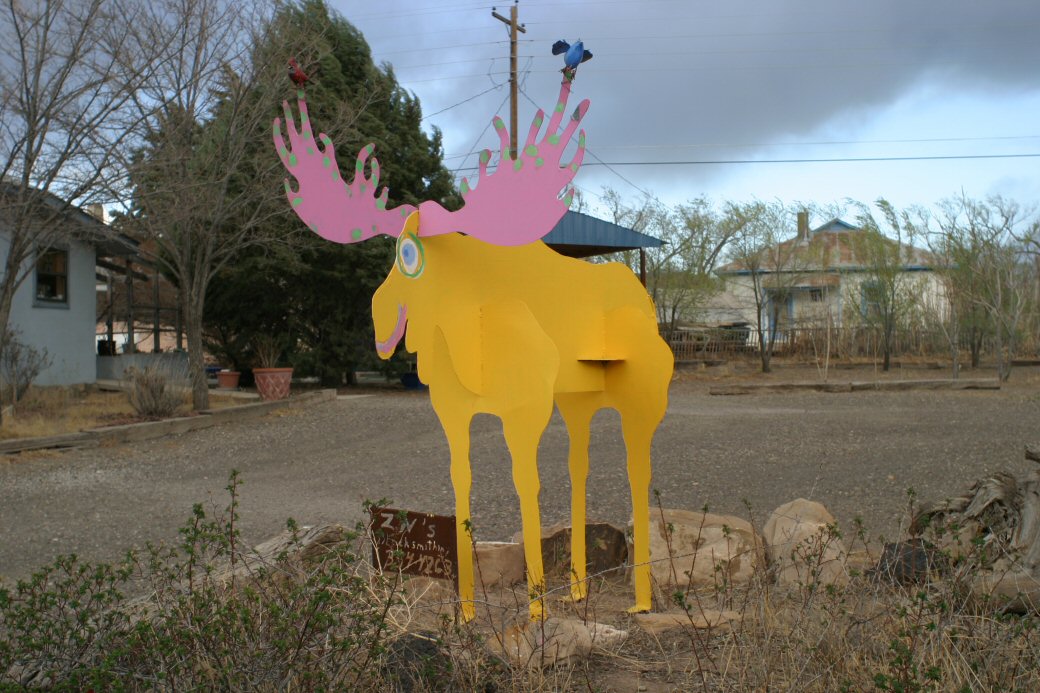
|
We left the VLA and headed south to our next hotel in Alamagordo. In a little town north of there we spotted this moose on the side of the road. When we got to Alamagordo we checked into our hotel. When we booked it, there weren't many choices. It was the scariest hotel we have ever stayed in. The door to our room looked like it had been kicked in. We moved the table in front of the door and I think Barry slept with one eye on our rental car.
*-*-*

|
The next morning we found the New Mexico Museum of Space History. It was a gem of a museum about the early days of space with an emphasis on the role White Sands Missile Range played. They also had a special traveling exhibit of Dogs in Space. This is a view of Alamagordo from the museum parking lot.
*-*-*
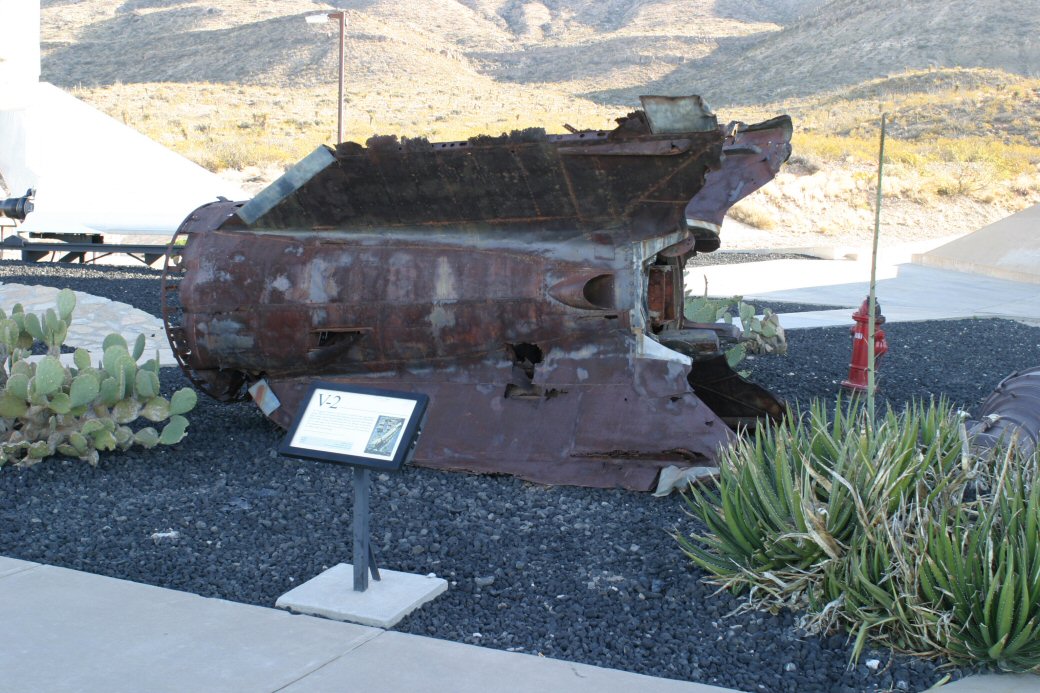
|
A V-2 tail section on display in the outdoor part of the museum.
*-*-*
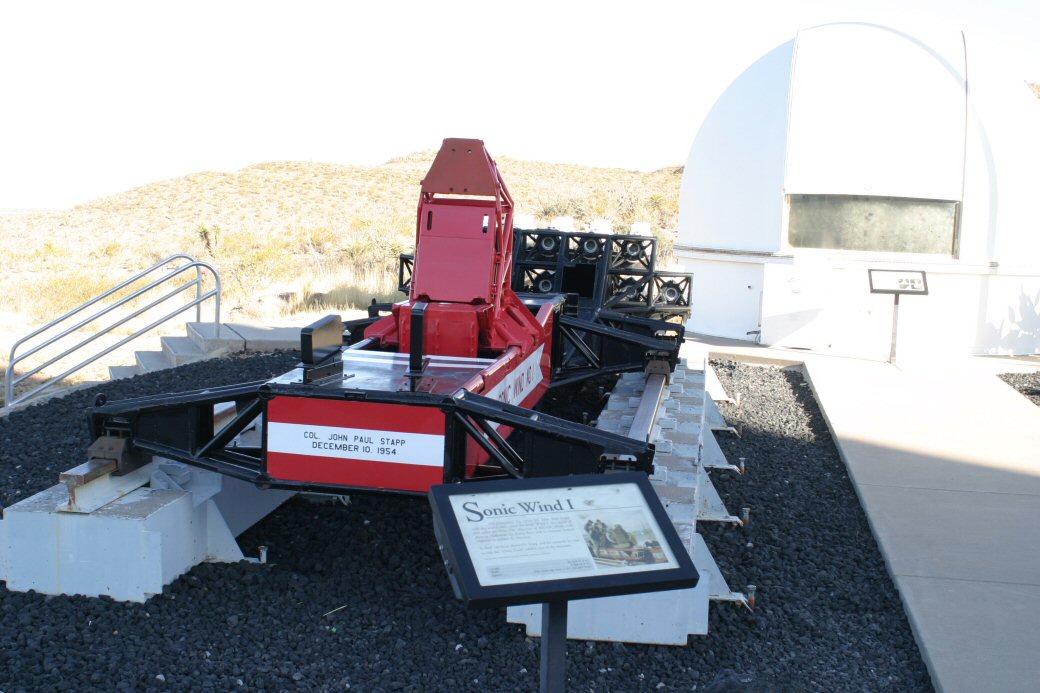
|
A rocket sled on display, used by Colonel John Stapp, in his pioneering study on the effects of acceleration and deceleration on the human body.
*-*-*
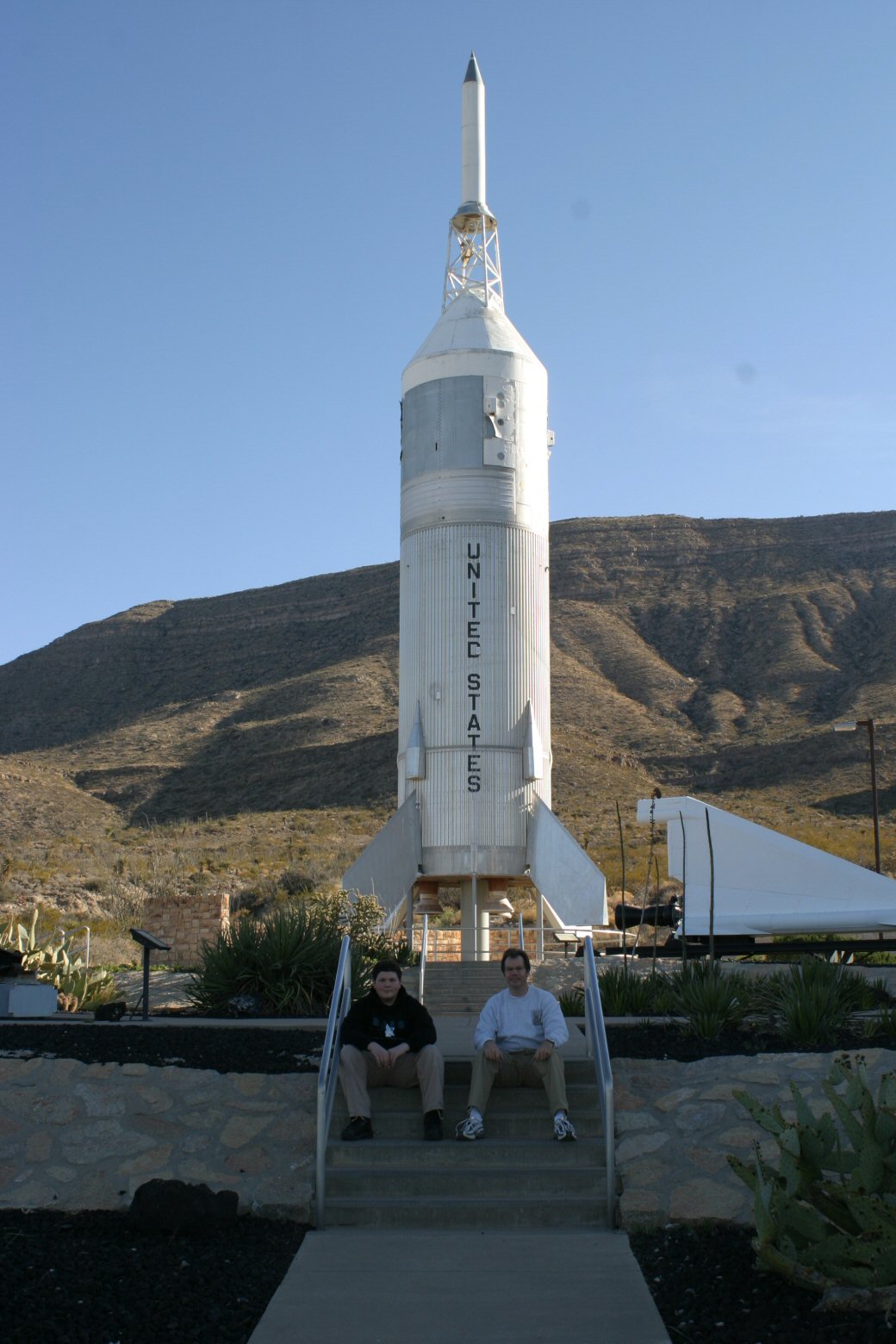
|
Barry and Kevin sitting in front of Little Joe II. This rocket was used to test the launch escape system and heat shields for project Apollo capsules.
*-*-*
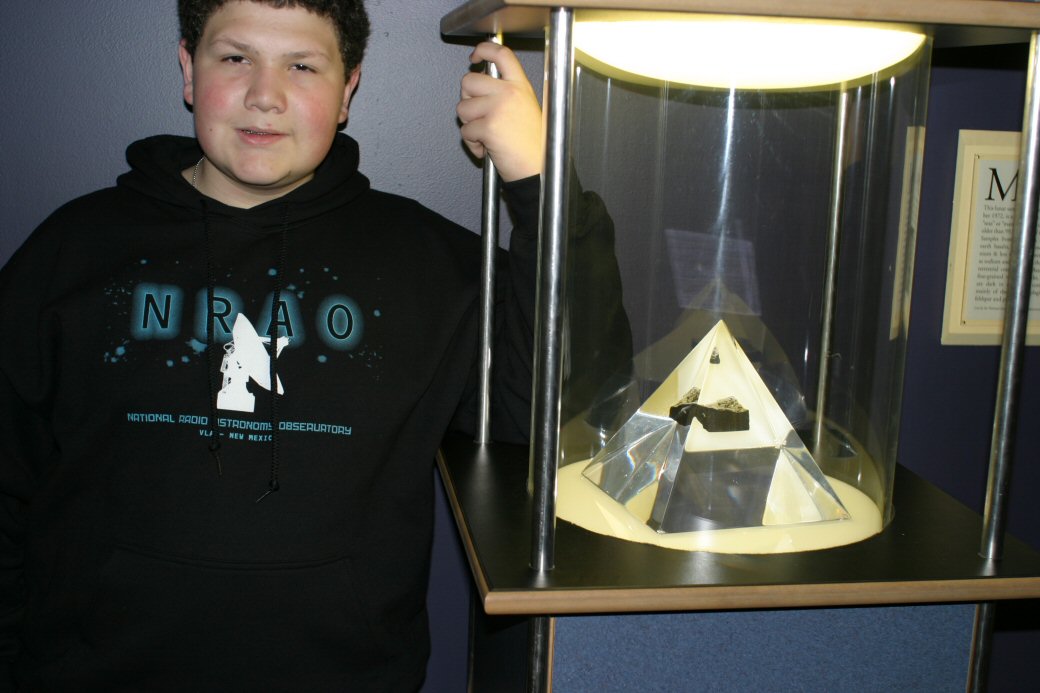
|
We moved inside the museum and found all sorts of interesting artifacts. Kevin standing with a moonrock on display.
*-*-*
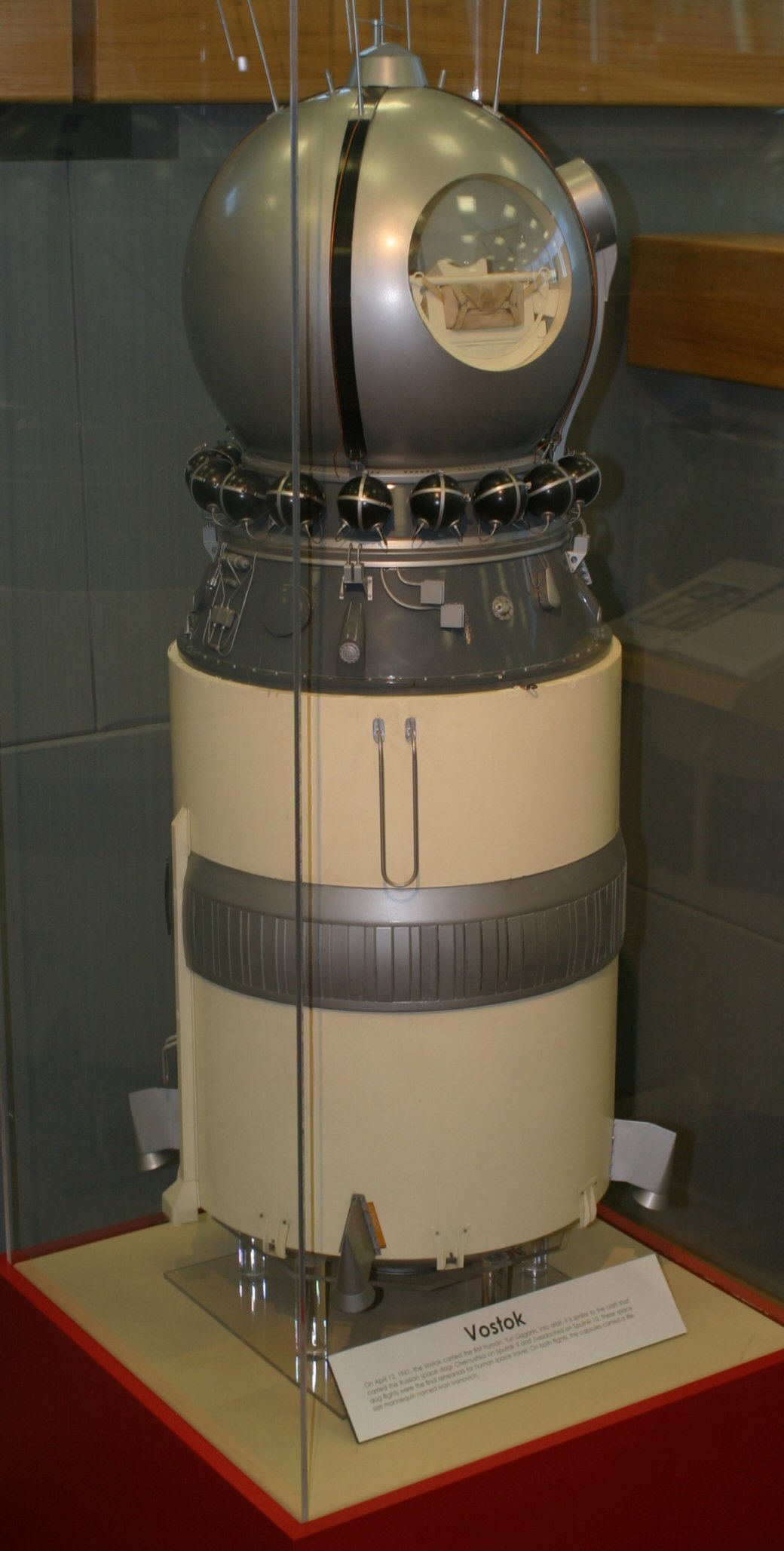
|
A model of the Russian Vostock Spacecraft. The spherical portion on top is where the Russion cosmonaut would live. On the real capsule that was about 8 feet in diameter.
*-*-*
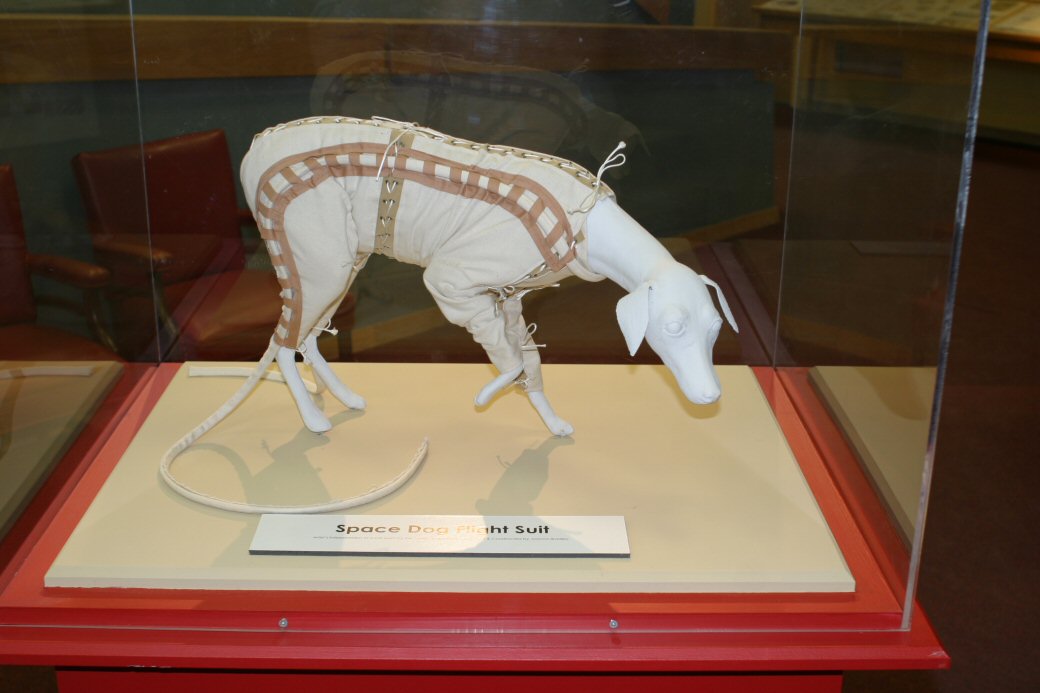
|
This is an example of the flight suit used for the Russian dogs who went into space. The first to orbit was a dog named Laika.
*-*-*
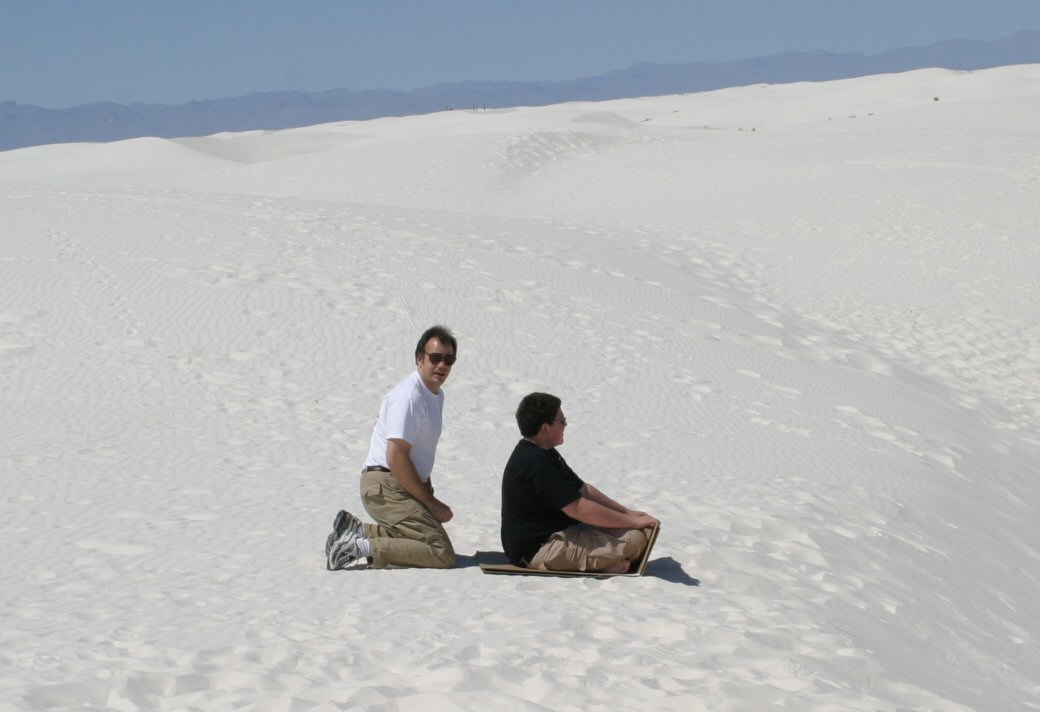
|
We wrapped up our visit to southern New Mexico with a drive through White Sands National Monument where we frolicked in the sand.
*-*-*